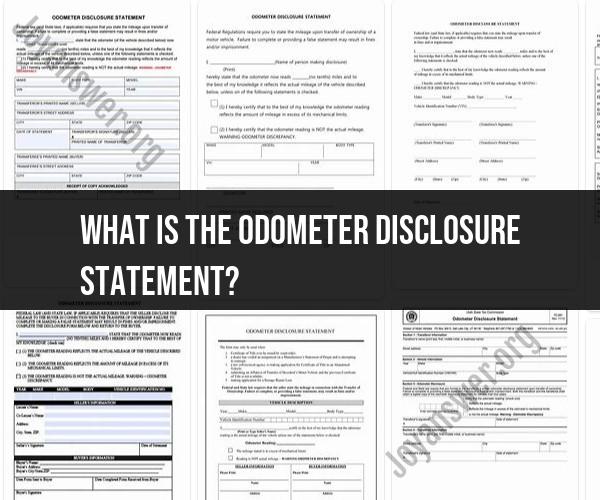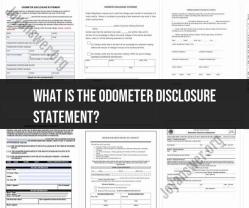What is the odometer disclosure statement?
The odometer disclosure statement is a key document used in vehicle transactions, particularly when transferring ownership of a motor vehicle from one party to another. It serves as a legal declaration regarding the accuracy of the vehicle's odometer reading at the time of sale or transfer. The purpose of the odometer disclosure statement is to prevent odometer fraud, which involves tampering with or misrepresenting the actual mileage of a vehicle.
In many jurisdictions, including the United States, odometer disclosure statements are required by law as part of the vehicle transfer process. The document provides important information about the vehicle's mileage, which can impact its value, resale price, and potential mechanical condition. The statement aims to ensure transparency and protect both buyers and sellers from fraudulent practices.
Here are the key elements of the odometer disclosure statement:
1. Odometer Reading: The statement includes the current odometer reading of the vehicle at the time of the transaction. This reading indicates the total number of miles or kilometers the vehicle has traveled.
2. Date of Reading: The date when the odometer reading was taken is recorded on the statement. This helps establish the specific point in time when the reading was documented.
3. Seller Information: The individual or entity selling or transferring the vehicle provides their name, address, signature, and sometimes their driver's license number or other identifying information.
4. Buyer Information: The individual or entity purchasing the vehicle provides their name and address. In some cases, the buyer's signature may also be required.
5. Vehicle Information: Basic details about the vehicle being sold or transferred, such as the make, model, year, and vehicle identification number (VIN), are included on the statement.
6. Declaration of Accuracy: The seller's signature on the statement serves as a declaration that the provided odometer reading is accurate to the best of their knowledge.
7. Liabilities and Penalties: The statement may include language outlining the legal liabilities and penalties for providing false information or engaging in odometer fraud.
The odometer disclosure statement is typically included as part of the overall vehicle title or as a separate document. It varies by jurisdiction and the specifics of local laws and regulations. In some cases, the statement is required to be notarized to add an extra layer of authentication and verification.
Failure to accurately disclose the odometer reading or engaging in odometer fraud can result in serious legal consequences, including fines and potential criminal charges. Buyers are advised to thoroughly review the odometer disclosure statement before completing any vehicle transaction to ensure accurate representation of the vehicle's mileage.


